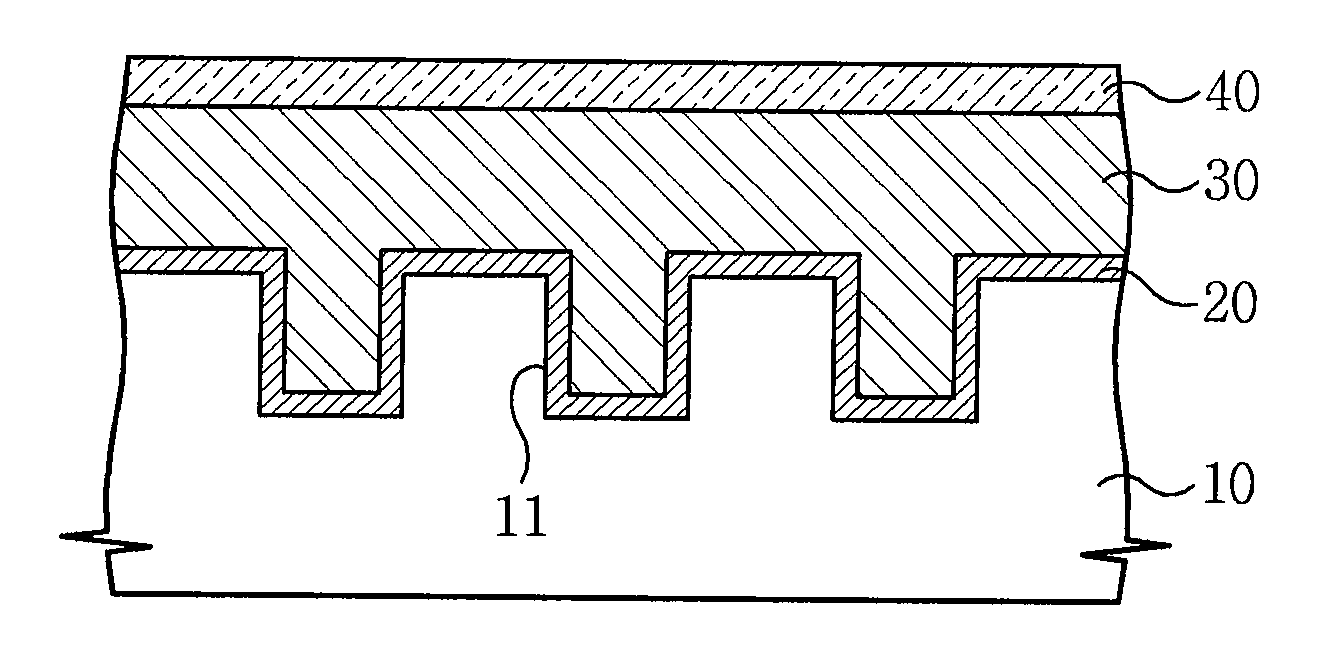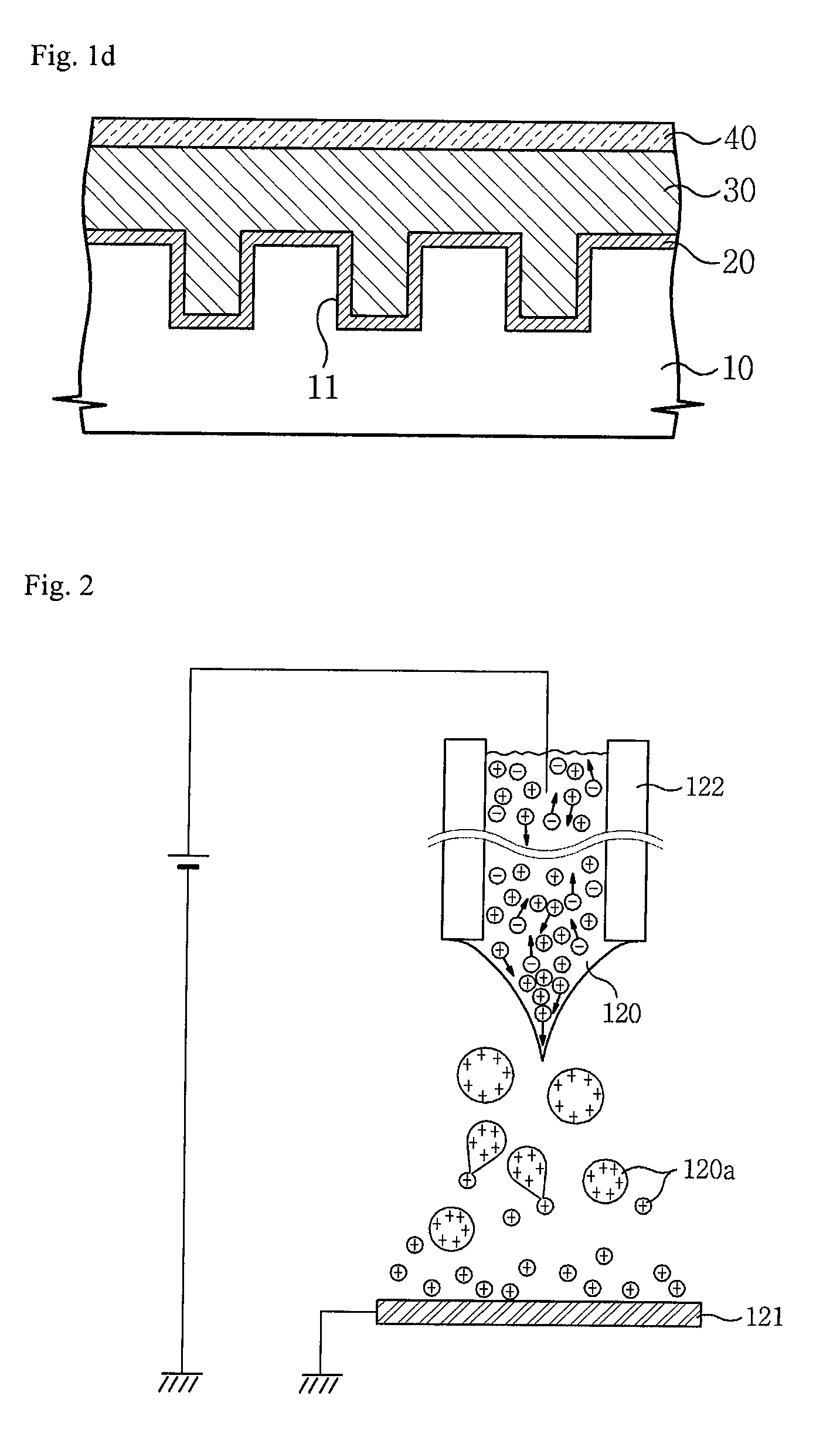Organic solar cell using conductive polymer transparent electrode and fabricating method thereof
a transparent electrode and organic technology, applied in the field of solar cells, can solve the problems of increased cost of solar cell fabrication, solar cell raw material supply-demand and fabrication cost, and achieve the effect of easy formation and excellent electrical characteristics
- Summary
- Abstract
- Description
- Claims
- Application Information
AI Technical Summary
Benefits of technology
Problems solved by technology
Method used
Image
Examples
Embodiment Construction
[0022]Hereinafter, preferred embodiments of the present invention will be described in detail with reference to the accompanying drawings. Technical descriptions that are well known in the art to which the present invention pertains and are not directly connected with the present invention will be omitted as much as possible from the descriptions of the embodiments. This is for the purpose of communicating the features of the present invention more clearly by omitting unnecessary descriptions.
[0023]In addition, some components in the drawings are exaggerated, omitted, or schematically shown, and the dimensions of the actual components are not entirely reflected in the respective components shown in the drawings. Like reference numerals indicate like elements throughout the specification and drawings.
[0024]FIGS. 1a to 1d are sectional views illustrating an organic solar cell and a fabricating method thereof according to an embodiment of the present invention.
[0025]Referring to FIG. 1...
PUM
| Property | Measurement | Unit |
|---|---|---|
| Electrical conductor | aaaaa | aaaaa |
| Transparency | aaaaa | aaaaa |
Abstract
Description
Claims
Application Information
 Login to View More
Login to View More - R&D
- Intellectual Property
- Life Sciences
- Materials
- Tech Scout
- Unparalleled Data Quality
- Higher Quality Content
- 60% Fewer Hallucinations
Browse by: Latest US Patents, China's latest patents, Technical Efficacy Thesaurus, Application Domain, Technology Topic, Popular Technical Reports.
© 2025 PatSnap. All rights reserved.Legal|Privacy policy|Modern Slavery Act Transparency Statement|Sitemap|About US| Contact US: help@patsnap.com



